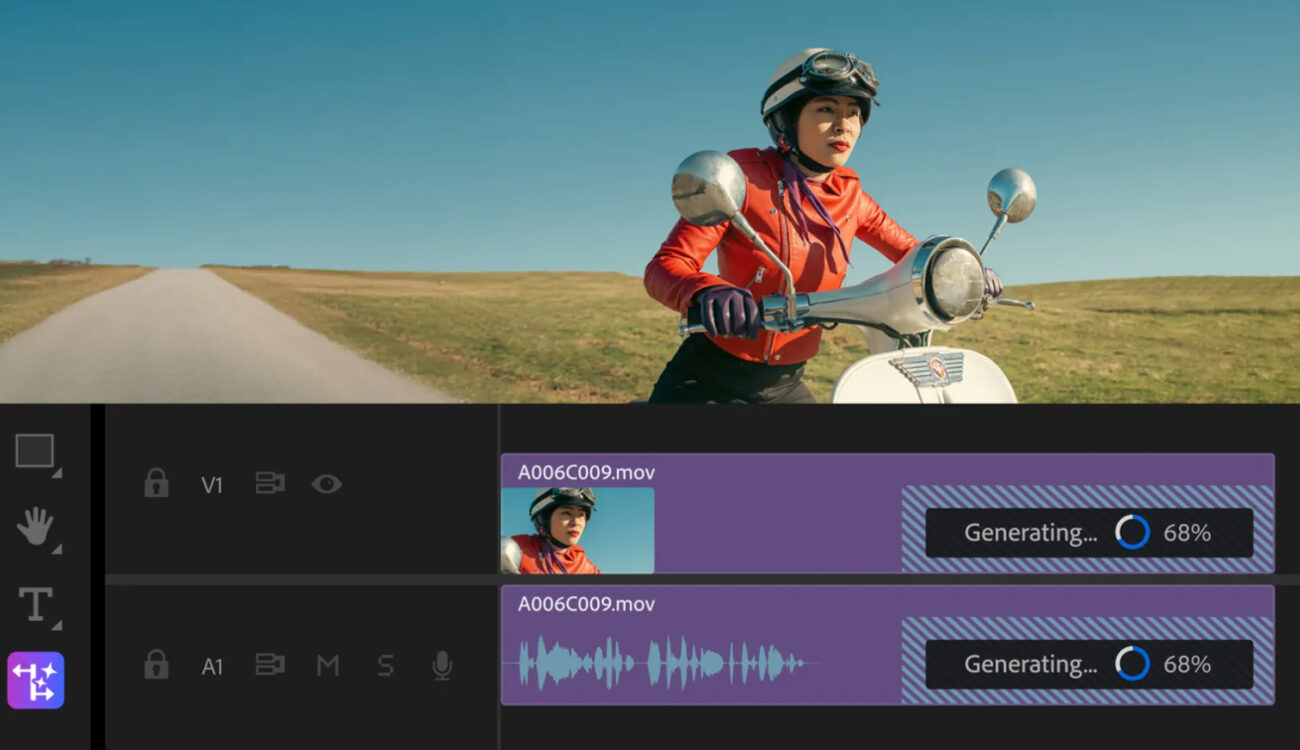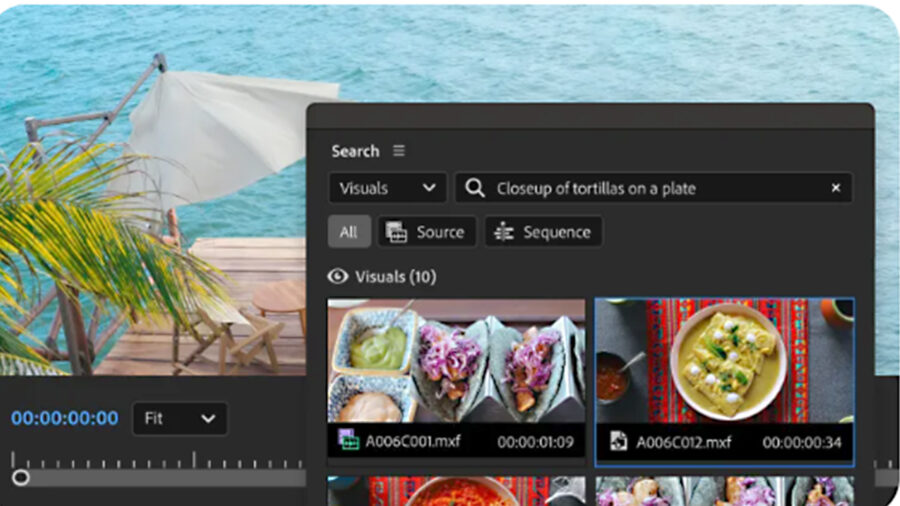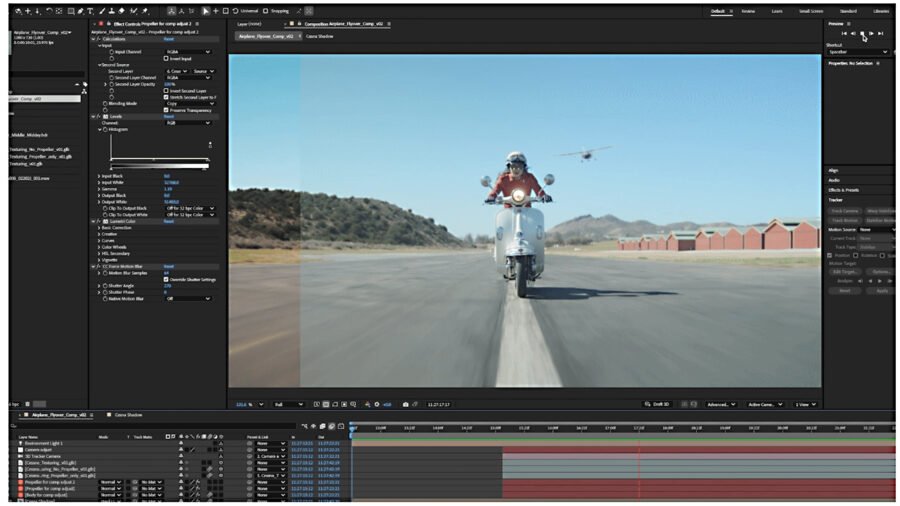
Adobe has announced a major new round of updates to Premiere Pro and After Effects, just ahead of NAB 2025. The spotlight is on AI-driven tools designed to streamline workflows and support editors and motion designers’ creative decisions – particularly a new feature called Generative Extend. Initially introduced in beta during Adobe Max in October 2024, Generative Extend has now been fully integrated into Premiere Pro with the release of version 25.2. These updates are part of Adobe’s broader push to bring more automation and intelligence into the editing process.
First, let’s have a brief overview of what’s new in Premiere Pro and After Effects before we go into detail:
- Generative Extend lets you add up to two seconds of new footage to the start or end of a clip using Firefly AI – useful for smoothing transitions without reshoots.
- Media Intelligence automatically tags clips and lets you search using natural language, saving time when hunting for specific shots.
- Caption Translation now supports 27 languages, with multiple caption tracks editable right in the timeline.
- Color Management gets easier with drag-and-drop tools and automatic conversion of log/raw footage to SDR or HDR.
- Plus: dynamic waveforms, colored labels, and better GPU support in Premiere Pro; and in After Effects, a faster playback engine, 3D FBX model support, and HDR monitoring.
Firefly-powered Generative Extend in Premiere Pro
The most talked-about feature is Generative Extend, powered by Adobe Firefly. Editors can now add a few extra seconds (up to two) of generated video to the beginning or end of a clip – helpful for smoothing transitions or extending a moment that feels a little too short. The results match the look and motion of the original shot, and background audio, like room tone or ambient sound, can be extended as well (up to ten seconds).
The tool is built into the timeline, and results can be previewed and adjusted directly within the edit. It runs in the background while you continue editing, and clips are marked with Content Credentials to show where AI was used. It’s free during the rollout but eventually will require Firefly credits, with costs based on the format, frame-rate, and resolution of the video.

AI-Powered media search
Also new is a smarter way to search through footage. A revamped Search panel now uses AI to tag clips automatically, recognizing things like objects, locations, camera angles, and more. Editors can type natural language queries – like “close-up of a woman laughing in a car” – to find what they need faster, even in large, unsorted projects. The system can also pull up related transcript content and metadata like shoot date or camera type, all in one place. Searches run locally, so no internet is required. Adobe also points out that as with all of their tools, your content isn’t used to train models.

Automatic caption translation
Captions in Premiere Pro can now be automatically translated into 27 languages using AI. Multiple caption tracks can be viewed and edited directly in the timeline, making it easier to create multilingual content or localize videos for different regions or language groups.
Color management updates
Premiere’s new Color Management tools are designed to make things simpler when working with log or raw formats. The software can now automatically convert clips to SDR or HDR, reducing the need for manual LUTs and helping match footage from different cameras. A new wide-gamut color pipeline is also available for editors who want more control over grading and color matching.

Performance upgrades under the hood
And finally, some updates that make Premiere Pro faster and more reliable. Dynamic waveforms now update as you adjust audio levels, and sequence tabs can be color-coded for better organization. Editors on Apple silicon and newer Windows systems will see faster playback and export times, especially when working with H.264, HEVC, and Canon Cinema RAW Light. Adobe says they are also working with NVIDIA to support real-time playback and smoother timeline performance on GPUs built with the new Blackwell architecture.
After Effects enhancements
After Effects 25.2 brings major performance improvements and more streamlined 3D tools. A new high-performance preview system now uses both RAM and local disk caching, so longer compositions play back smoothly – even on laptops. Native support for FBX files opens access to a wider range of 3D models, while Animated Environment Lights make it possible to use video layers or 360° footage as moving light sources that cast dynamic reflections and shadows. The update also includes HDR monitoring, simplified 3D workflows with one-click controls, and other small but useful tweaks like custom transparency grids and expanded animation controls.
Price and availability
All features are available now. You can update your Premiere Pro to 25.2 here and After Effects here. For further details and information on the 25.2 release, please see the Adobe announcement here. To see Generative Extend at this year’s NAB 2025, visit Adobe’s Booth SL2210 in the South Hall of the Las Vegas Convention Center.
What feature are you most interested in trying out? How do you see AI shaping post-production over the next few years? Start the conversation in the comments below!


























